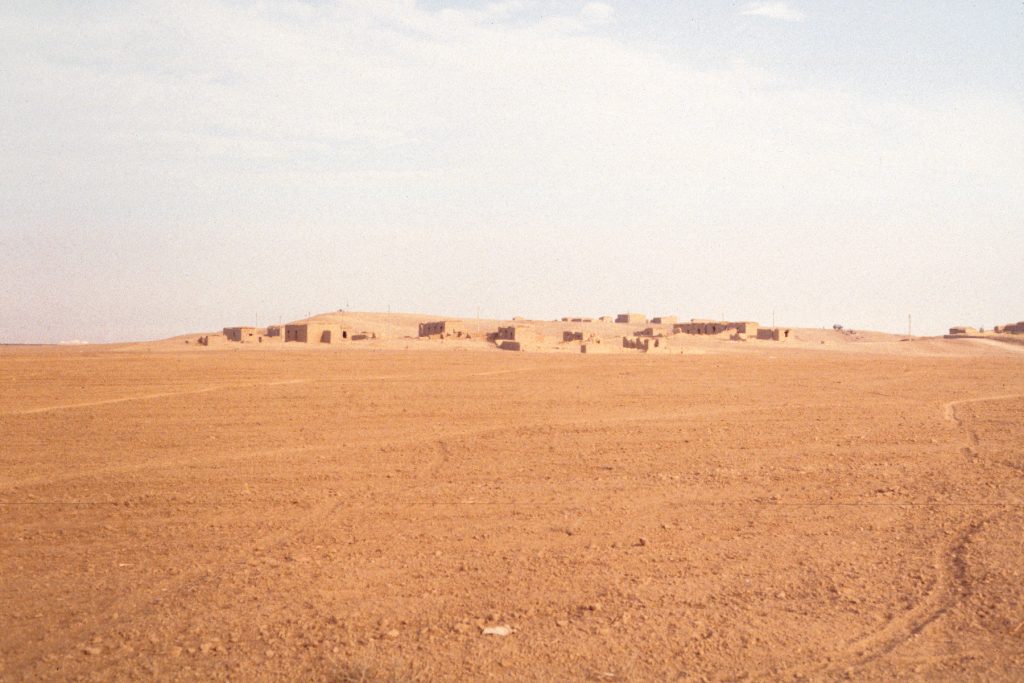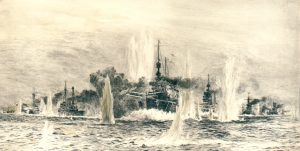Scholars have spent decades researching the origins of civilization. Most scholars have traced its roots to the land of Mesopotamia, which is often called “the Cradle of Civilization.” Initially, scholars believed that the oldest cluster of city-states making up the first civilization was in Southern Mesopotamia, known as Sumer; however, a new city-state found in the ruins of Northern Mesopotamia may have existed even earlier than that of Sumer. This once thriving and prosperous city may have come to an early end; it may have been the first city to have been destroyed by war. This city was Tell Hamoukar.1
Tell Hamoukar was a city located in what is known today as Syria. The city is currently believed to have existed as far back as 5000 years ago, during the Ubaid period (6500-3800 BCE). This is the same period during which Ur and Uruk of Sumer were also developing into complex societies. However, fossils and treasures found within Hamoukar do bear resemblance to those found in the other two, which suggests that Hamoukar could have pre-dated those other cities by several centuries.1

Most Mesopotamian cities were formed near rivers and bodies of water because of their irrigation potential for agriculture. Unlike these other cities, Hamoukar developed away from major waterways, but it possessed fertile soil. Crates and other tools not normally found within the region, such as obsidian, laid scattered around Hamoukar. This suggests that Hamoukar was a trading port, and one of the first of its kind.3
Scholars are gradually coming to see Tell Hamoukar as having been possibly one of the earliest complex societies. Many of the pots, doors, and items found around Hamoukar bare symbols to denote ownership. This was done at a time before written language had been invented.4 Each seal possessed different pictures, such as lions or kissing bears, and were stylistically different from seals found in other regions. Infant burial grounds and eye idols, as well as ovens and other tools for food preparation, were also recovered.5.
Tell Hamoukar’s prosperity was not meant to last, however, as it soon found itself under the threat of invasion. Littered around the ruins of the once mighty city lie over 1,200 clay bullets and 120 clay balls. Scholars hypothesize that these oval shaped bullets may have been launched from slings and hurtled towards some foe with deadly accuracy. Many of these bullets were flat, which suggests that the clay had not fully hardened before being slung. It is possible that there had been an attack on Hamoukar, and that it proved to be a greater battle than the invaders had originally anticipated. The defenders may have used all of their ammunition and were forced to create new rounds during the battle.6
Nonetheless, scholars believe that the siege of Tell Hamoukar was probably a success. Citizens fled as the once proud city soon burned to the ground.7 While the invaders have not been identified, many of the weapons match Uruk designs, and it is believed that they are the ones who overtook the city, though their exact reason remains a mystery. The dating of the weapons suggests that this was one of the earliest recorded battles in history.8
- Lewis Lord, Richard J. Newman, and Marianne Lavelle, “Chaos over the Capital,” U.S. News & World Report, June 5, 2000, 18. ↵
- Lewis Lord, Richard J. Newman, and Marianne Lavelle, “Chaos over the Capital,” U.S. News & World Report, June 5, 2000, 18. ↵
- Andrew Lawler, “North versus South, Mesopotamian Style,” Science, 312, no. 5779 (June 2006): 1461. ↵
- Andrew Lawler, “North versus South, Mesopotamian Style,” Science, 312, no. 5779 (June 2006): 1461. ↵
- McGuire Gibson and Mohammad Maktash, Antiquity 74 Issue 285 (Sept, 2000): 477 ↵
- Zach Zorich, “Relics of the Very First War,” Discover 27, no. 3 (March 2006): 12. ↵
- Andrew Lawler, “North versus South, Mesopotamian Style,” Science, 312, no. 5779 (June 2006): 1461. ↵
- Zach Zorich, “Relics of the Very First War,” Discover 27, no. 3 (March 2006): 12. ↵



36 comments
Andres Palacios
Great article very informative. It is very incredible how Hamoukar even with being such an old city still was characterized by being a trading port. Very well written article.
Jezel Luna
I remember reading a little bit about the land of Mesopotamia in previous articles but did not recall it to be known as “the Cradle of Civilization.” Considering how most Mesopotamian cities were near bodies of water, it was surprising that Hamoukar was developed away from the waterways. It’s kind of cool that the weapons show that this was possibly one of the earliest recorded battles.
Aylin Salinas
Wow, this was very informative. I was unaware that there was a city of civilization before Sumer. It’s crazy to think that this civilization that seemed to be doing so well was overrun easily. It’s very mind-boggling to think that there was a civilization dating back centuries before Sumer. Now that we know of Tell Hamoukar maybe we will eventually find another civilization that will date back centuries before Tell Hamoukar!
Rachel White
Before reading this, I had never even heard of Hamoukar, however I had heard of Mesopotamia and more importantly Sumer, which I had always been taught was the oldest city-state that existed. I am now intrigued by this new city that has fossils dating back even before that of Sumer. And I wondered if historians presume that Tell Hamoukar was a success, why it did not make it into history books and why I had never been familiarized with the name previously. Good research and interesting article!
Celina Resendez
I had been taught and always believed that Sumer was the first city of civilization. It’s fascinating that they have found Tell Hamoukar to show fossils dating back centuries before. It seems that your most recent source is from 2006 and I am curious to see how much more information they have found since then or will find to tell us more about this city. This article definitely makes me want to learn more about Tell Hamoukar!
Priscilla Reyes
Very well written article. It is informative, descriptive and easy to follow: that’s a great combination! The introduction and creative title grab the readers attention real quick.